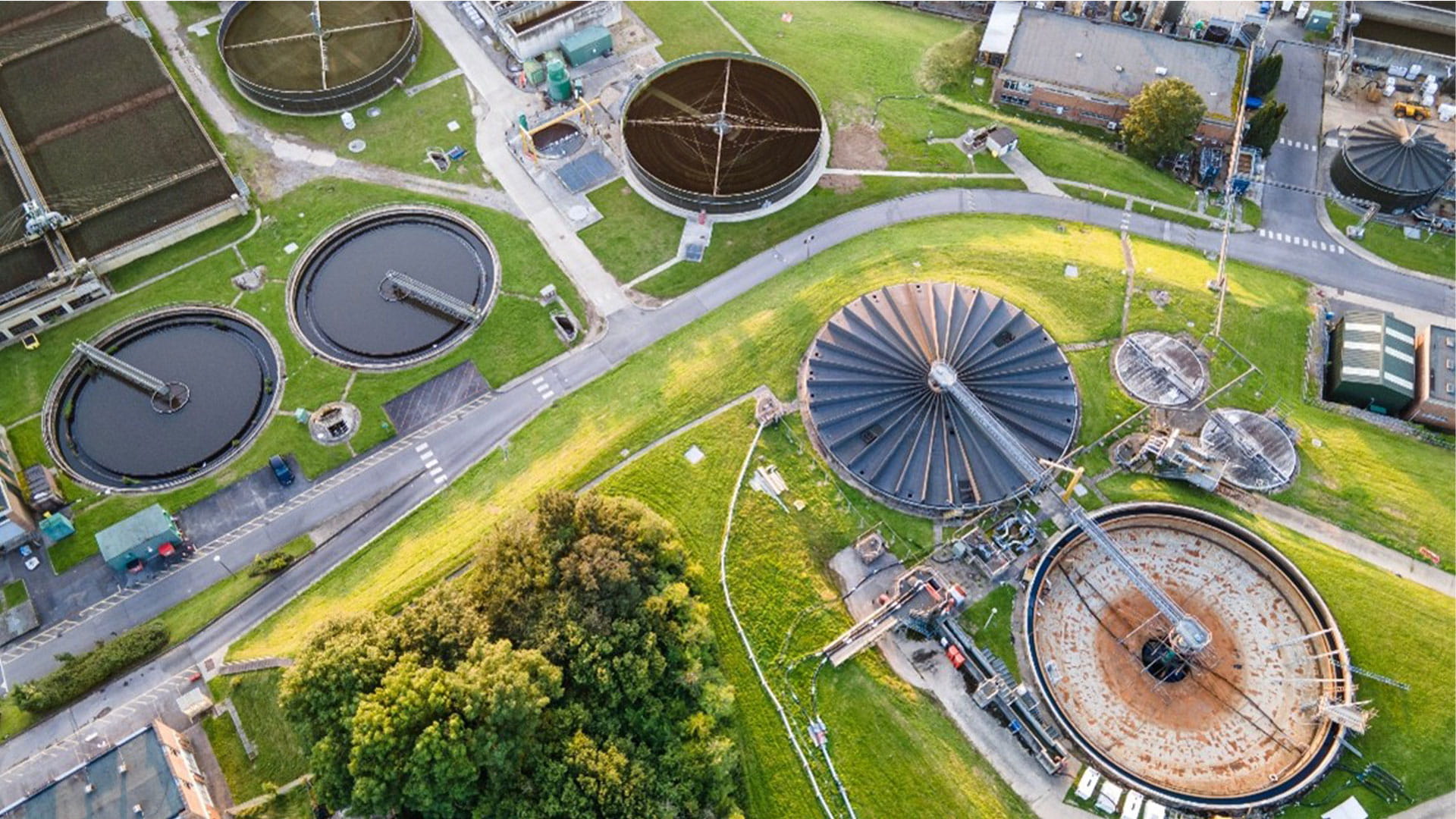Net zero: four key innovations

In UKWIR’s report “Achieving Net Zero and beyond”, it’s clear that eradicating the stubborn last part of the water industry’s carbon footprint will rely on embracing new technology. So, where should water utilities look first?
Advanced anaerobic digestion
The impact of improving sludge digestion on the sector’s emissions is complex. On one hand, it can be a direct source of renewable energy, that’s already part of the wastewater treatment process. On the other, where methane escapes, it’s a powerful greenhouse gas in its own right, with recent reports showing up to 60% of the biogas benefit can be negated by downstream, methane emissions.
Measuring process emissions is relatively complex. Currently most sites have controls in place to meet discharge consents, and a few can also minimise energy usage, but hardly any monitor methane. However, examples in Denmark and the Netherlands show managing digestion carefully can significantly cut unwanted emissions.
Boosting the capacity and optimising biogas production of anaerobic digestion tanks means they can ultimately produce more power. And improving the treatment process can also create an end product that is safer for recycling to land – and more stable, so carbon stays sequestered in the ground.
We understand how beneficial advancing anaerobic digestion treatments can be, and our technologies and software solutions in this field can make a difference:
Ephyra
Ephyra is a reconfiguration of existing anaerobic digestion tanks into a plug flow (tanks in series) process to create more biogas and give plants more capacity so they can produce more power. This reduces short circuiting and accelerates digestion rates meaning more methane is captured for use with less being emitted from the digestate. It’s a low carbon solution which can help take sites towards energy neutrality – a big step towards net zero.
Helea
Helea is a pre-treatment for digeston – developed by Anglian Water – which requires installation of a low-footprint 3-stage pre-treatment before the existing AD process. This produces a Class A biosolids product, increases capacity and enhances the digestion process. Compared to alternative pre-treatments, it is a lower temperature, and therefore, lower carbon impact process to create a safe, stable, end product efficiently. This has already been implemented across four sites, each with nearly a decade of operation.
The optimum combination of Helea and/or Ephyra will, of course, depend on the current tanks and assets present on a given site – and the requirements of the final product being produced.
Heat pumps for digestion processes
Anaerobic digestion treatments themselves have heating requirements, and these are historically met by burning a portion of the biogas they produce to keep the treatment operational, known as parasitic heating. But using heat pumps instead means you can maximise the biogas being injected into the gas grid.Heat pumps are an efficient way to heat anaerobic digestion tanks and they are the lowest carbon solution end to end. We’ve already seen the benefits of using heat pumps at the Sleeuwijk wastewater treatment plant in the Netherlands.
Here, we’re using Ephyra to optimise sludge digestion – and we’re using ground source heat pumps to produce all the heat required for the process. That means 100% of the biogas produced at Sleeuwijk can be used in the gas grid.
Low energy biological phosphorus removal
Phosphorus needs to be removed from water. But the biological treatment processes require significant power and usually chemical addition. Nereda is an award-winning wastewater treatment technology. It uses aerobic granular biomass rather than chemicals to recover phosphorus from wastewater. It requires less energy – and consequently lowers carbon emissions.In fact, Nereda typically uses 30% less power and meets 1 mg/l TP consents with no chemicals (and up to 90% less chemicals to even meet the lowest discharge standards), providing more sustainable wastewater treatment.
Using sustainable biological P removal, like Nereda, helps water companies both meet regulations and to protect the ecosystems around their water treatment sites.
Operational Excellence with Twinn Aqua Suite software
It is also possible to significantly reduce the footprint from current assets and processes by operating them in an optimal way. With better use of existing data, the hidden value can be leveraged with the implementation of digital solutions and the power of machine learning and artificial intelligence.
By looking into the future and anticipating what will happen, predictive control can deliver additional energy savings, even on already optimised assets. And when applied across your entire asset base, these incremental savings add up to deliver a real impact on the energy you use and the carbon you save, with the OPEX saving for the sustainability gains.
The usage of Twinn Aqua Suite software has been common practice in the Netherlands for over 25 years, where 60% of potable water is produced and distributed. This not only reduces energy consumption, but also leakages by better management of pressure. This typically delivers a 15% energy saving across the Dutch drinking water networks. Another example is for communal wastewater treatment plants, where energy savings of up to 20% and mitigation of the potent greenhouse gas N2O of 33% has been realised.
These efficiencies can be replicated on any part of the man made water cycle that uses power to operate – like pumped wastewater or high rate anaerobic reactors used by industrial clients.
Innovating for today and tomorrow
At Royal HaskoningDHV, we’re always working to find solutions to help the water industry reduce its carbon footprint. One key example is our research into the effect of nitrous oxide (N2O) emissions on the climate, and some of the ways we can reduce these emissions.We’ve collated more than twelve years of research into our report: “Let’s start reducing nitrous oxide emissions today”, where we discuss current N2O emissions and the role Advanced Process Control (APC) plays in reducing their concentration.
Take a look to learn how APC can create stable processes and operations – and improve effluent quality, create energy savings, and reduce emissions.
Got a question?
Contact our Water Technology experts!